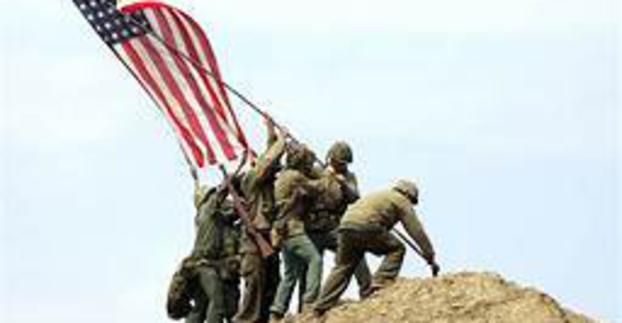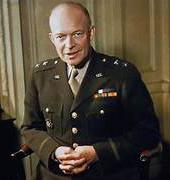Dwight D. Eisenhower
"Never let yourself be persuaded that any one Great Man, any one leader, is necessary to the salvation of America. When America consists of one leader and 158 million followers, it will no longer be America."
"My Middle Class America"
America’s Struggle for Freedom During World War I
During World War I, the United States initially maintained a neutral stance, under the leadership of President Woodrow Wilson. However, the growing threat to international freedom and democracy, particularly due to unrestricted submarine warfare by Germany and the Zimmermann Telegram’s threat to American sovereignty, pushed the U.S. into the war in 1917. America’s entry was seen as a struggle to safeguard the principles of freedom and self-determination for all nations, aligning with Wilson’s vision of making the world “safe for democracy.” The U.S. mobilized its resources and manpower, contributing significantly to the Allied victory by supplying troops, materials, and economic support. This involvement marked a shift in U.S. foreign policy toward greater global engagement.
The war also sparked internal struggles for freedom within the U.S., particularly concerning civil liberties. The U.S. government passed laws such as the Espionage Act of 1917 and the Sedition Act of 1918, which curtailed free speech and dissent. This led to a national debate about balancing national security with individual freedoms, with many critics arguing that the government had overreached in its efforts to suppress opposition. The suppression of labor strikes and the targeting of immigrant communities added to the tension, highlighting the domestic challenges to freedom during wartime.
America’s Struggle for Freedom During World War II
World War II represented a more direct and existential struggle for freedom, not just for America, but for the entire world. After the Japanese attack on Pearl Harbor in 1941, the U.S. joined the war, driven by the need to confront the Axis powers—Nazi Germany, Fascist Italy, and Imperial Japan—who threatened global peace and freedom. President Franklin D. Roosevelt framed the conflict as a fight for the "Four Freedoms"—freedom of speech, freedom of worship, freedom from want, and freedom from fear—underscoring America’s ideological commitment to ensuring a world free from tyranny and oppression.
The U.S. played a critical role in the defeat of the Axis powers through both its military contributions and its economic might, symbolized by the Lend-Lease Act and its massive industrial output. At the same time, the war effort also spurred significant social changes domestically, particularly with regard to women and minorities. As millions of men went off to fight, women entered the workforce in unprecedented numbers, and African Americans, while still facing segregation and discrimination, fought for greater inclusion and rights in what came to be known as the Double V campaign—victory abroad and victory for equality at home.
The Legacy of America's Struggles
Both world wars fundamentally reshaped America’s role on the global stage, cementing it as a defender of freedom and democracy. The United States emerged from World War I as a reluctant global power, grappling with its new responsibilities but still hesitant to fully embrace internationalism, as seen in the Senate’s rejection of the League of Nations. By the end of World War II, however, America had fully committed to a global leadership role, helping to establish the United Nations and other international institutions aimed at preserving peace and promoting freedom around the world.
These wars also left lasting impacts on American society. The struggle for freedom during these conflicts brought significant social changes, accelerating the civil rights movement and pushing forward women's rights. World War II, in particular, served as a catalyst for greater demands for racial equality, as returning African American veterans challenged segregation, leading to the early seeds of the Civil Rights Movement in the decades that followed.
In both World War I and World War II, America’s struggle for freedom was not limited to the battlefield. The nation grappled with the tension between safeguarding national security and upholding civil liberties, a challenge that continues to shape the U.S. during periods of conflict. The legacies of these wars, both in terms of foreign policy and domestic social progress, continue to influence the country’s approach to freedom and democracy today.
Through its participation in both world wars, the U.S. helped to dismantle oppressive regimes and protect democratic ideals. However, this struggle for freedom also revealed the complexities of maintaining those ideals domestically, as marginalized groups fought for their rights even as the country championed freedom abroad. This dual struggle—abroad for democracy and at home for equality—defined America’s experience in the first half of the 20th century.
"The raising of the American Flag at Iwo Jima"



